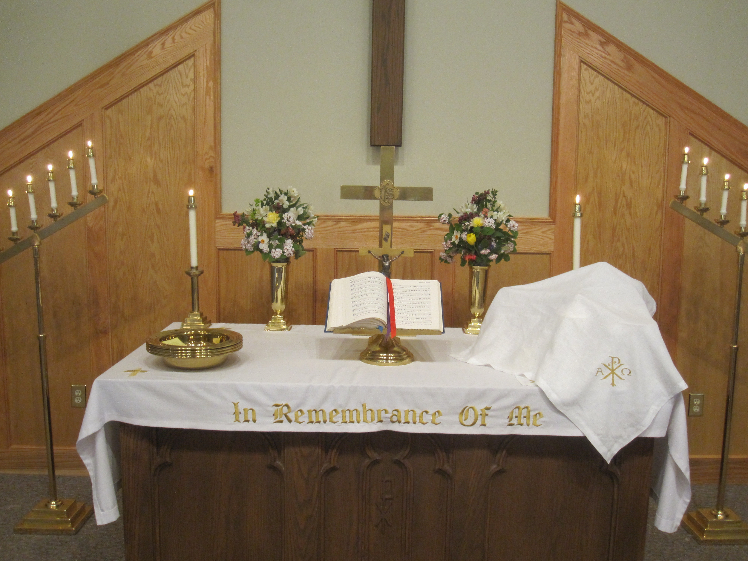
The second major furnishing of the church is the altar, which is the focal point of the
Services of the Church. The altar is the
place to which our worship is directed and is usually made out of stone or
wood. The term comes from the Latin word altare
which means the place or structure where a sacrifice is offered. The top of the
altar is called the mensa, a Latin
term meaning “table”, since this is where the Lord’s Supper is prepared and
served and Christ’s sacrifice is given for us. The altar portrays an aura of
dignity and honor, evoking feelings of reverence and respect for being in the
presence of our holy God. Hence, it is located in the front and center of the
chancel as a visual symbol that the Gospel proclamation of the church centers
in Christ crucified. The altar sits on the upper step in the chancel, called
the predella or footpace. There are two possible locations for the altar on the
predella: against the back wall of the chancel or a “free standing” altar,
moved forward from the wall so the pastor can stand behind it during parts of
the liturgy.
The main purpose for the altar is that it serves as a symbol of
Christ and His perfect sacrifice for sin. In the Old Testament, the people of
God would sacrifice offerings to the Lord. These sacrifices pointed forward to
the once and final sacrifice that God Himself would make on the altar of the
cross. The very Son of God, Jesus Himself, “appeared once for all at the end of
the ages to put away sin by the sacrifice of Himself” (Hebrews 9:26). Often
times, the mensa is engraved with five crosses, one on each corner and one in
the middle, representing the five wounds of Christ (hands, feet, and side).
The altar is also reminiscent of the ark of the covenant (Ex. 37)
on which sat the mercy seat of God (His throne) as its lid, and in which was
placed the tablets of the covenant (the 10 Commandments), Aaron’s staff that
budded, and a golden urn holding manna. The ark received the sacrifices for the
sins of God’s people as it served as the altar of atonement. It was located in
the Holy of Holies in the Temple, the location where the glory of the Lord dwelt. Read Hebrews 9-10 for further explanation of
how Jesus fulfills the Old Testament Laws, keeps the covenant for His people
and establishes the New Covenant.
note: post 2/11 adapted from my brother's writings
No comments:
Post a Comment